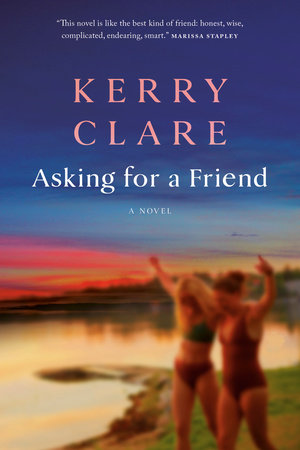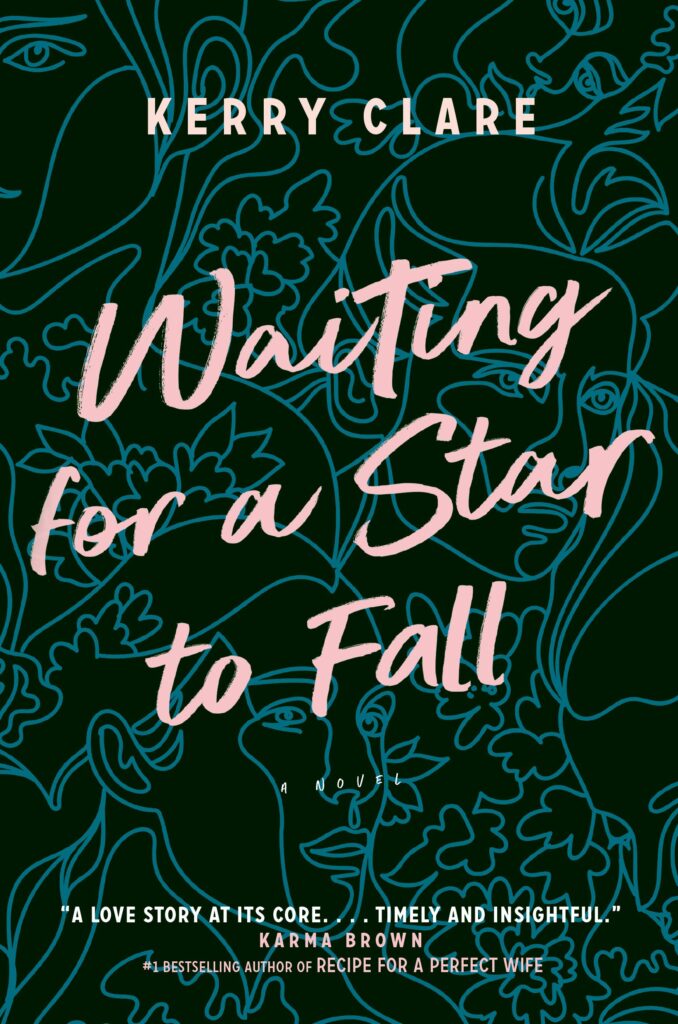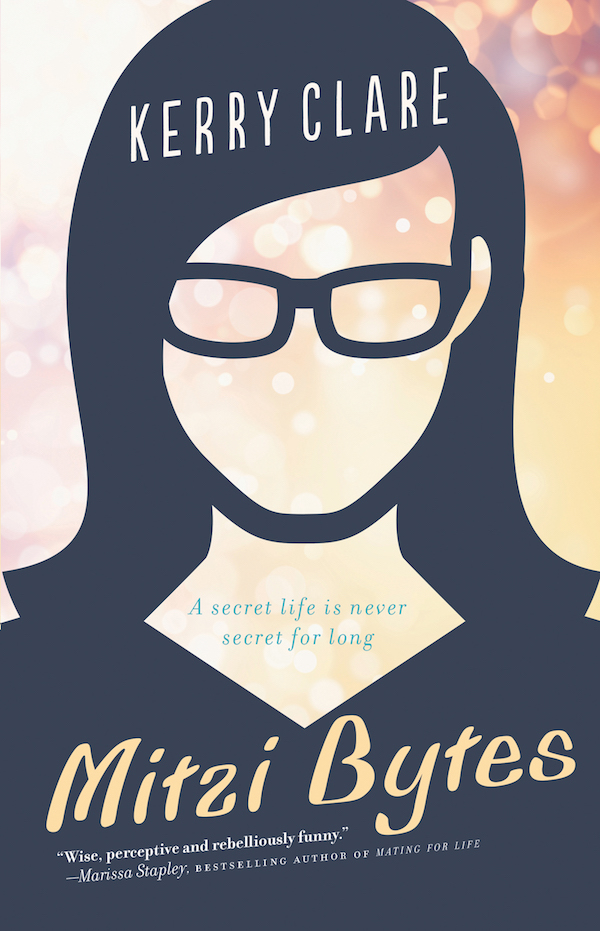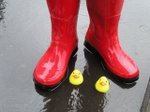July 3, 2019
Molly of the Mall, by Heidi L.M. Jacobs
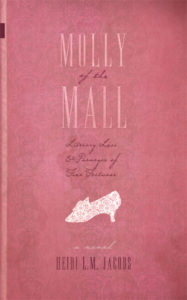
I am positively besotted by Heidi L.M. Jacobs’ debut novel, Molly of the Mall, which I kind of suspect was written just for me, a 1990s coming-of-age tale of a young woman who aspires to be an authoress and works at a mall. But not just any mall—the West Edmonton Mall, with its peacocks and water park, as far from Jane Austen as a mall can possibly be. A novel that is a teeny bit Bridget Jones’ Diary, if Bridget happened to work at a shoe store, and a whole lot of a Caitlin Moran-esque tale of how to build a girl, except instead of coming from a working class family in Wolverhampton, Molly’s the youngest daughter of a pair of academics, which can similarly render a person a misfit.
I loved this novel.
It takes place over the course of a year as Molly spends a summer working Le Petit Chou Shoe Shop (big on up-selling polish and sprays) and then going back to school for the third year of her English studies, feeling out of her depth in academia, aspiring to write a Jane Austenesque novel set on the Canadian prairies, and (naturally) wondering about love. There are several contenders for her male romantic lead, including a childhood friend who’s in her English class, her sister’s old boyfriend, and a mysterious man at the mall who she meets in the Penguin Classics section of the bookstore.
This is not a novel that anybody would ever call taut—but let’s not hold that against it. Instead of taut, this novel is a trove of delights, including a Jane Austen-inspired mix tape (side 2 is Mr. Darcy’s, and includes Chicago’s “Hard to Say I’m Sorry”); fragments of Molly’s ridiculous school assignments; passionate thoughts on Oasis and the Gallagher brothers (and an amazing passage on the first time she hears “Wonder Wall”; a fabulous plot thread on Molly’s determination to reclaim the works of James McIntyre, Canada’s cheese poet; and the part when her manager discovers she’s plotting her novel on a boring shift at the shoe store, instead of building polish displays, and she concocts a falsehood about writing a fan letter to Roy Orbison (“After an awkward silence, Tim looked at me and said, ‘You know he’s dead, right?’ I looked at the floor and nodded. I whispered, ‘It’s still too soon. I don’t want to talk about it.”)
If none of this sounds remotely appealing, then I am not even going to try to convince you. Molly of the Mall may not be for everyone. But if you came of age in the 1990s, worked in a shopping mall, longed for a literary life, ever felt a bit weird about your dad’s devotion to Robbie Burns, dreamed of a romance that was swoon-worthy, felt confused in university English classes, and let 19th century novels play perhaps too great a role in informing your perspective on…everything—then you will not be sorry. It’s also a really beautiful love letter to Edmonton.
Read this book.
July 3, 2019
Summer Reads on the Radio
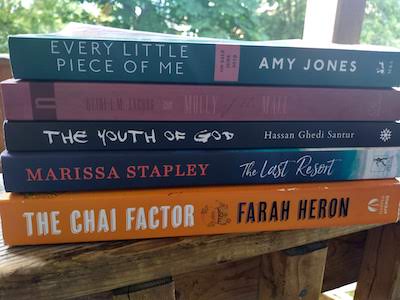
I was on CBC Ontario Morning today talking summer book picks. You can listen again on the podcast—I come in at 42.30.
June 26, 2019
Big Sky and The Last Resort

To start with, the Jackson Brodie novels were not my favourite Kate Atkinson, but of course I’d read anything by Kate Atkinson. And while indeed these books were my gateway to detective fiction—it seems unbelievable now that I ever needed one—I always preferred my Kate Atkinson more literary. Reading Behind the Scenes at the Museum was one of the most important literary experiences of my life.
But I also know that for many readers, the Jackson Brodie novels were a gateway to Kate Atkinson altogether, before Life After Life and God in Ruins, which were each a brand new level of success in an already remarkable career. And so there has been considerable excitement around Big Sky, Atkinson’s first Jackson Brodie novel in years. But I was not expecting to fall as hard for this novel as I did.
And I did, oh did I ever, carrying hardback book in my bag with glee and pulling it out at every opportunity. The kind of book that makes you only want to be reading, conjuring an incredibly intricate fictional world that’s just meta enough that you know it’s Kate Atkinson, and with real world ties that make Big Sky a novel that’s important as well as delicious.
In this book, Jackson Brodie stumbles backward into a human trafficking ring that had its origins in pedophile rings made up on 1970s’ high profile entertainers, which is not the stuff of fiction, if you’ve been reading the UK press in the last five years. The links between then and now are part of what the story is out to discover, and Atkinson does fascinating things with plot and time to tie the pieces together, and she is a writer so firmly in command of her story and all its threads, almost as though the threads were reins creating the novel’s momentum, making the story go go go.
Underlining everything in this book—the humour, the pleasure, the characters, Jackson’s ex-wife’s voice that’s now stuck in his head—there is rage, rage at the use and abuse and exploitation of vulnerable girls and women by hideous men, and this is a fiercely and furiously feminist novel that’s intent on justice, which isn’t always on the side of law, because the law has protected too many of these hideous men for too long, and Jackson Brodie is having none of it.
—Although it’s not actually Jackson who breaks the case, as he continues stumbling backward—as is often the case, it’s the women who get things done, not to mention a washed-up drag queen, an emotionally intelligent teen-age boy, and the lyrics to “Let It Go.”

“Let it Go” does not factor in The Last Resort, the latest (and bestselling!) novel by my friend Marissa Stapley, but it’s a novel that fits neatly with Big Sky, which I realized this morning as I was reading the latter at its climax. Both novels are about girls and women who’ve been abused and manipulated by hideous men who know just how to wield their power, until things finally reach a breaking point. The Last Resort is set at a luxury resort in Mexico run by a pair of married celebrity marriage counsellors whose own repressed secrets are beginning to rise to the surface, just as a deadly storm is rolling in, and one thought crystallizes like an icy blast: “They’re never going back (to the patriarchy), the past is in the past.”
Burn it down, blow it up, push the bastard off a cliff./ The women are furious, and they’re not taking any more shit.
Okay, I made that part up, with a little inspiration from Elsa, but I reread The Last Resort last week and found it even more compelling than I did upon my first read, appreciating Stapley’s (I refer to all women authors by their surnames in reviews as a feminist statement, even when those authors are my friends) willingness to complicate, to ask questions about women’s complicity in the abuse of other women, to have her readers sit uncomfortably in that space, and to implicate patriarchal institutions—the church, marriage—in such an unabashedly feminist manner.
Packaging all that up inside a plot that zips along and makes for such a gripping read—what more from a book could you ask for?
June 25, 2019
Jump In

The city swimming pools are open, and school is almost out, and I ALMOST went swimming in the lake on Sunday, and I turned 40, and celebrated my 14th wedding anniversary, and both my children had birthdays too, and Briny Books sold so many books that we ran out of money for postage, and my blogging course is nearly ready for launching, which is very exciting, and I am trying not to bemoan the end of May and June, which are my very favourite times, but there is still summer ahead, never mind all the work (ACK!) I have to do between now and then. Deep breaths. It’s going to be fine.
June 22, 2019
Reflecting on 40

Not since the dawn of the millennium have I felt such pressure to mark the turning over of a year—and let me tell you, I don’t thrive under such pressure. I ended up spending the evening of December 31, 1999 eating chips in my parents basement, which was better than the world’s infrastructure crumbling as the clock ticked over, of course, but it was really only memorable because it was not a good time. (There might not even have been chips, but I just added that part for extra detail.)
So this was reason I wanted to keep things low-key for my 40th birthday this week, indulging in the everyday pleasures that I am fortunate make up the bulk of my life. The everydayness is the point…but then did I want to see my friends, but our apartment is too small for a party (it wasn’t once upon a time, but once many of our friends had children and then those children grew, the situation became untenable), and I can’t afford to book a venue, and I don’t want to spend the energy to make a big production, but…and here I was on the same tangent that led to me greeting the new millennium from a basement, so best to ease back if I don’t want that to happen again.
I am not good at milestone birthdays. My 30th birthday was only better than my 20th birthday, because my 20th was the birthday where I drank too much and ended up falling in a puddle of my own pee. (At least it wasn’t someone else’s.) When I turned 30, I was hardly standing upright either because I had a three-week-old baby and life was really hard, and that was also the day that my computer crashed, losing everything I’d worked on in my twenties. (Hindsight: this was NOT a tragedy.)

So I am hoping we can set the bar at this: my 40th birthday will be more pleasant than my 30th, whose highlight was that my newborn baby slept for twenty minutes will we ate our dinner and I was able to sit in a chair unencumbered and enjoy half a glass of beer.
Never mind that I no longer enjoy beer at all (alcohol affects my sleep, which has become my biggest vice as I move into this new decade, and then it’s hard to get up first thing in the morning for my daily swim, which is my SECOND biggest vice as I move into this new decade. It is a really good thing that I never hoped to die before I got old because it’s too late for that…).
I am so happy to be 40…or just two days short of it, as I write this. I’ve seen enough of my contemporaries die of cancer in the last ten years that my perspective on aging now is that it’s nothing short of a gift, and I feel so lucky to receive it. And grateful for my thirties too for what they delivered me, how far I’ve come since then, all the amazing things I’ve been able to make and see and do and meet, not least among them books, friends, adventures, challenges, and so many extraordinarily beautiful days. (Like Albert from Kate Atkinson’s Behind the Scenes at the Museum, I continue to collect good days like other people collect coin or postcards. Unlike Albert, I did not die in WW1.)
That exhausted new mother sitting in a chair with half a glass of beer would have had her mind blown by the way it’s all unfolded. I feel so incredibly lucky.

I am reading Judith Viorst’s poetry collection How I Did I Get to be 40 and Other Atrocities, which is fun and also fitting because it was ten years ago that I was reading her It’s Hard to Be Hip Over 30 (and how—oh, and her most recent collection about nearing 90 [!] came out not too long ago...) And while I am loving the book (especially the design, since my library copy is decidedly vintage now), for me it has turned out not to be the poetic word on my new decade, because I recently read Marita Dachsel’s collection There Are Not Enough Sad Songs.
From her poem, “the forties”:
We are fabulous. We are stronger than we’ve ever been,/ because we know ourselves, and we love ourselves. Our bodies are finally our own…
June 20, 2019
It’s Pretty Easy, Being Green

The following is a list of changes our family has made to our purchase habits and lifestyle over the past couple of years in order to live a greener life. I write them down here to inspire other people to follow suit, and hope you will leave a note with any other green habits of your own that I might be able to put into practice.
- Soapberries instead of laundry soap, available for sale at Bulk Barn. (I also air dry most of my laundry to conserve energy.) For stains, I have a bar of old-fashioned laundry soap (also from Bulk Barn) and it’s really effective.
- Using baking soda for washing dishes (we don’t have a dishwasher). We still buy dish-soap but it’s used for approximately 1/4 of dishwashings, and a single bottle lasts for ages.
- Buying bar soap (which we always did anyway because liquid hand-soap is for millionaires!)
- Buying glass jars instead of plastic food containers, when possible—we get Pinebridge Yogurt now and it’s also delicious. Buying cream cheese in the cardboard packet instead of plastic container, etc. Would love to find a non-plastic way to buy cottage cheese though!
- Buying ice cream in biodegradable containers (and bonus: Chapmans and Kawartha Dairy are sold in these and are both pretty local!)
- We bring water bottles everywhere instead of buying juice or water in plastic bottles
- Reusable cups for hot beverages! We bought Keep Cups a few years ago, and bring them everywhere we go. When I lost my lid, I was able to order a replacement.
- I don’t use the plastic produce bags from the grocery store, and have reusable mesh bags instead. When I don’t remember to bring them, I just let my sweet potatoes roll around naked.
- We stopped buying paper towels and napkins, and instead bought up a boat load of secondhand reusable cloth napkins. We also have cloth diapers left over from long long ago that double as paper towels, except that they may outlive us all.
- Bringing our own food containers for take-out. We thought they’d think we were weird, but if they did they didn’t mention it…
- Reusing bread bags and other such things for freezing food and for lining our kitchen compost bin
- We banned plastic wrap! I thought I would miss it as I used it for zesting lemons and it was really useful in this way, but zesting is all right without it, and there are plenty of less plastic ways to cover food for storage.
- I replaced our shower curtain with a polyester machine-washable one and didn’t buy a liner. The shower curtain still keeps water from going all over the floor, and dries quickly.
What to work on? I tried bar shampoo, but it did my hair no favours, and so I went back to bottled—I only wash my hair twice a week anyway—but would like to find a non-plastic solution. Deodorant and dental products remain a huge source of plastics waste in our house. And several kinds of fruit and veg arrive in those non-recyclable black plastic containers, or the plastic tubs that mushrooms come in and we need less of that. Finally, I would love to do more shopping at one of those no-packaging stores (shampoo! Vegetable oil!) but we don’t have one nearby.
Further Problems: The burden of solutions to environmental problems cannot fall on individuals alone. In addition to cutting down on waste, we also need to be electing politicians who are willing to tackle this issue and stop putting corporate interests first—and then holding our leaders to account.
June 19, 2019
The Youth of God, by Hassan Ghedi Santur
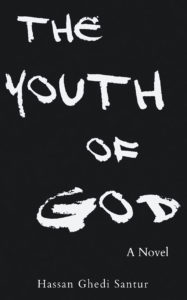
Hassan Ghedi Santur’s novel, The Youth of God —about a young man of Somali background growing up in Toronto—moves between the perspective of the young man himself, Nuur, and that of high school teacher Mr. Ilmi, who is one of the few staff members at the school who isn’t white and therefore has a better perspective than most on what his radicalized students are up against. And in his student, Nuur, Mr. Ilmi sees incredible promise, the kind of scholar he might liked to have become had he not chosen a safer and more conventional path with teaching. Which is not a path that he finds altogether fulfilling, and the novel follows Mr. Ilmi through his experiences at school and also at home, showing his growing connection to his wife, not long ago arrived from Somalia. Things he suspected about her at the beginning of their relationship turn out to be more complicated and interesting than Mr. Ilmi’s original inferences—and this will be a theme in the novel, the things the characters are wrong about, which is unsettling for the reader who is situated in their points of view.
This is especially the case with Nuur, who is smart and obedient, who defines himself as good against his rebellious older brother (who he still looks up to—it’s complicated). Nuur is a very pious Muslim who dresses in traditional religious clothing, which causes him to stand out and be victimized at school, and also alienates him from his more secular parents, who are fighting their own battles and still struggling as immigrants after twenty years in Canada. Young enough still to belief in certainty and absolutes, Nuur is drawn to his teacher and the possibilities of his future in academia—but at the same time he is attracted to a charismatic Imam at his mosque whose messages underline the supposed purity of Nuur’s worldview, but also might possibly be dangerous.
The duel perspectives of The Youth of God provide a compelling story with great tension and a tragic sense of inevitability. Santur shows the way that racialized youth (and Black men in particular) are often not permitted the second (and third) chances availed to their white peers, and therefore how the consequences of their choices and impulses can be dire, even fatal. He also paints a broader picture of the experiences of the Somali diaspora in Canada, and the challenges and struggles that immigrants to Canada continue to face.
June 18, 2019
A Conversation with Kate Keenan
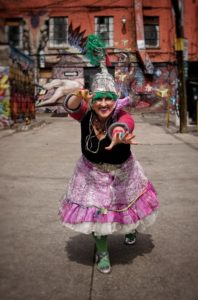
I met Kate Keenan about two years ago when our children were enrolled in the same swimming class and she made an immediate impression on me as she spent the class entertaining her other child with hand-clapping games—”See See My Playmate” was a favourite. We finally started talking, which was great because I had decided I wanted to be her friend, and then I ended up giving her a copy of my book after a conversation about books and reading, and then the next week she brought me her CD (“I’m in a band,” said this super-cool mom—who, it turned out, had an intergalactic alter-ego—like this was no big thang).

So what I’m basically saying is that I’ve been a huge Kate Keenan fan since “See See My Playmate,” and since then I’ve enjoyed watching her as part of the Space Chums (including in their show at the Toronto Fringe Festival last year).
Her play, The Really Real Adventures of Scott Free and Will Do (which she co-wrote with Lesley Halferty)is playing at Solar Stage at Wychwood Barns until the end of June. We saw it on June 9, and loved it—and it made me realize that there was lots about her career in theatre, writing and motherhood that I wanted to ask her.
*****
Kerry: Can you tell me the story of The Really Real Adventures of Scott Free and Will Do—when did you (co) write it and where was it performed?
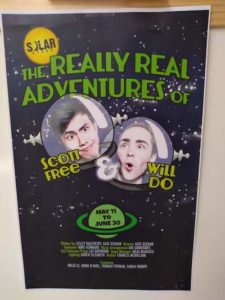
Kate: To tell you the story, I could start all the way back in high school at Etobicoke School of the Arts where I was lucky enough to be cast in “Les Goons” a Commedia dell’arte troupe run by our teacher John Glossop in the Lagoon Theatre on Centre Island. Best summer job ever. When Mr. Glossop stopped running “Les Goons” I was in grade 10 and some friends and I started our own children’s theatre company, “Island Treasures” in the same theatre. It was like a dream clubhouse/lemonade stand! And a real crash course in running a business…
“It was like a dream clubhouse/lemonade stand! And a real crash course in running a business…“
Anyway, after theatre school, I quickly got sick of having to wait to be cast in other people’s shows. So, knowing the theatre on the island was sitting empty, I started a company, “Shrimp Magnet Theatre Co.” with a bunch of friends from George Brown. We couldn’t afford the rights to any published plays, so we wrote our own—and I quickly became more passionate about writing than acting, which is saying quite a lot…
We would do the shows 6 days a week, 4 times a day (6 times a day at the beginning, until we came to our senses). We’d have rotating casts, but I usually worked about 5 days a week (along with running the operation with my best friend and co-author Lesley Halferty). You know that old thing where if you caught your kid smoking a cigarette, you locked them in the closet with a carton and wouldn’t let them out till they smoked them all? Okay, I guess that was actually a 1950’s thing and no one I ever knew was actually subjected to that but we all heard the stories… Anyway, it felt like that doing those shows. If a line was clunky, or a bit wasn’t working, you’d have to do it over and over again, watching audiences lose attention in the same spot, show after show. At the end of the summer, we were gasping to re-write!
“If a line was clunky, or a bit wasn’t working, you’d have to do it over and over again, watching audiences lose attention in the same spot, show after show.“
And we did. We usually did shows at least two years in a row—and I think it made us really, really good at knowing what worked and what didn’t and how to be unsentimental about stuff.
Oh dear, I’ve just noticed that didn’t really answer your question! So! Down to the nitty gritty! We created Scott Free and Will Do the summer of 2003, I think! I was 26. (and now I’m 42. WTF?!?) We performed it on Centre Island that year, then we did Toronto Fringe. Then Canmore Kid’s Festival, then Winnipeg Fringe. (And in between we cobbled together a tour in my parents’ minivan—4 actors, one Stage Manager, an entire set and all our luggage for over a month! We traveled to Sault Ste. Marie (where we stayed with my friend Trish’s family and partied under the Royal Order of the Moose), Atikoken, where we stayed in an old elementary school and played an epic game of hide and go seek all night, then in Geraldton, where we billeted with amazing people and a pet turtle, and also Thunder Bay, with lovely Rita and amazing Hoito pancakes.
Some incredibly talented people have been in the cast, including Keith Barker, who now is A.D. of Native Earth and Rebecca Benson, a prof at Carleton University. In particular, we can never forget C.J. Schneider, George Brown Theatre colleague who was a natural clown and a force of nature and comedy. A bunch of nonsensical/brilliant lines in the show are his (mostly and luckily because we could not control him) including “Boingy booing chop chop” and “its crazier than eating a dill pickle popsicle on a Wednesday that’s also a Tuesday!” C.J. died way too young of cancer in 2010. We miss him so much it hurts. Also the brilliant Matt Olmstead and Mark Purvis.

Kerry: What was it to bring the show to life again? What surprised you about this experience?
Kate: We brought the show to life at Solar Stage twice before when they lived in North York. This time around we had added two new actors (the moms). There were many layers of mind-blowing weirdness for me. First of all, it’s SUPER weird to revisit a show I worked on in my late twenties, with actors in their late twenties when I am now in my EARLY FORTIES! It was like a strange time warp!
I still felt EXACTLY THE SAME, but to the actors I was an elderly MOTHER OF TWO! I kept having to remind myself that I was not the same! To their credit the actors treated me as a total equal, and I really did feel younger while we were rehearsing. I was even joking more like I did in my twenties—it was really strange! And the second thing that blew my mind were the new jokes we found. I mean, I can’t imagine how many times I’ve done this show and STILL, this time, super obvious jokes would pop out that I guess had been staring us in the face for years! That made it so fabulous to rehearse again—finding new moments that ever-so-slightly improved the play. My mom and I have a joke that we can’t just enjoy a joke, we have to constantly be improving upon it. Turns out this is an obsession, and hopefully a career for me!
“It’s SUPER weird to revisit a show I worked on in my late twenties, with actors in their late twenties when I am now in my EARLY FORTIES! It was like a trippy time melt!“
We have done the show for so many audiences but I will always be blown away that we always get new, mind-blowing responses from the crowd. It was such a refreshing thing, right out of theatre school, to be performing a play so many times that you had to work to keep your energy up, as opposed to your nerves down. One thing that always kept me alive and engaged was the excitement of what the audience would bring to the show. And they are still bringing brand new things! For (a slightly unsettling but still interesting) example, just recently when the actors asked the audience, “How do you know you’re real?” A child replied, “because we could die.” Not the usual kids theatre fare, but pretty amazing…
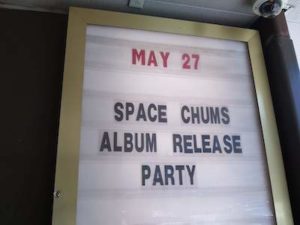
Kerry: You were writing for children before you had kids of your own. Has becoming a parent changed the way you relate to children? Are there things you know better now? (Or vice versa?)
Kate: How has becoming a parent affected how I write for children? Well, I think it’s allowed me to cheat. Honestly, before I had kids, I felt I remembered what it was like to be a kid myself. I feel further away from that now—can I blame the sleepless nights with my babies? I dunno, but I do feel grateful that parenthood has allowed be to experience childhood all over again with a new perspective. Funny, our show has two moms and two kids in it. If anything, I think I now approach the mom characters less as caricatures and more as real humans! The kids have stayed real…
“If anything, I think I now approach the mom characters less as caricatures and more as real humans! The kids have stayed real…“
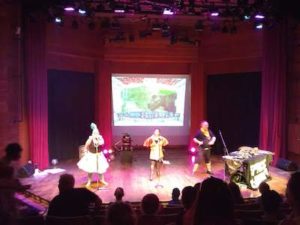
Kerry: What do you love about writing for children?
Kate: My love of writing for kids is twofold. Firstly, I’m super insecure, so writing for kids gives me a flimsy excuse not to “take myself too seriously.” It gives me the permission to be free and not judge what I’m writing. But actually that’s bogus, because I believe that writing for kids is as difficult and sacred as writing for adults—my ego just needs a weird cop-out.
Secondly, I love the honesty of kids. I love that when I’m performing for them, I know when they’re bored. There’s no fakery, so the feedback is super accurate and helpful. Being able to trick my ego and being given such robust feedback has helped my writing immensely!

Kerry: What other creative projects are you up to these days?
Kate: Right now I’m writing a bit for children’s television, still with my bestie and co-author of Scott Free & Will Do, Lesley Halferty—shows that have yet to air, but I will keep you posted! I’m also 1/3rd of an outer-space rock band for kids called Space Chums with Ian and Lindsay Goodtimes! This is where I get my acting and singing itch scratched and my general goofing around with kids itch as well!
And my other passion project is a podcast for kids where I write stories on demand from “story seeds” kids give me. I’ve only just started out, but so far I have a story for my eldest daughter Elwyn, called “The Lights in the Forest” and one for my youngest daughter Lucy called “The Ballad of the Barn Owl” My plan is to record them and eventually publish them.
June 17, 2019
Gleanings
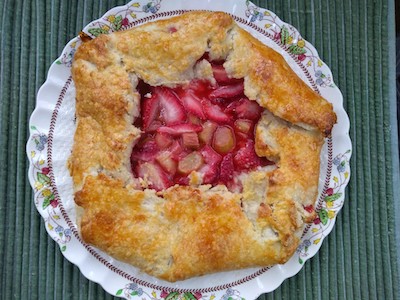
- Amelia Bedelia turns passive aggression into a kind of art.
- Sharing and generosity are at the core of our values and at the core of my art. Sharing, giving and generosity is a central tenet of my life. It’s tied to love, respect and compassion. It’s tied to justice.
- I expect the process of writing a novel might just involve a lot of thinking you are unworthy.
- The first day of outdoor swimming in Toronto is truly my favourite day of the year.
- ‘taxi!’, by helen potrebenko
- There’s some science behind the appeal of comfort reads, it turns out.
- And then I started thinking about community and about belonging.
- So after all the white and drabness of the other season, suddenly we arrive at summer.
Do you want to learn more about to write good things to read online? Check out Blog School and sign up for the newsletter.

June 14, 2019
Ruby’s Birds, by Mya Thompson and Claudia Dávila
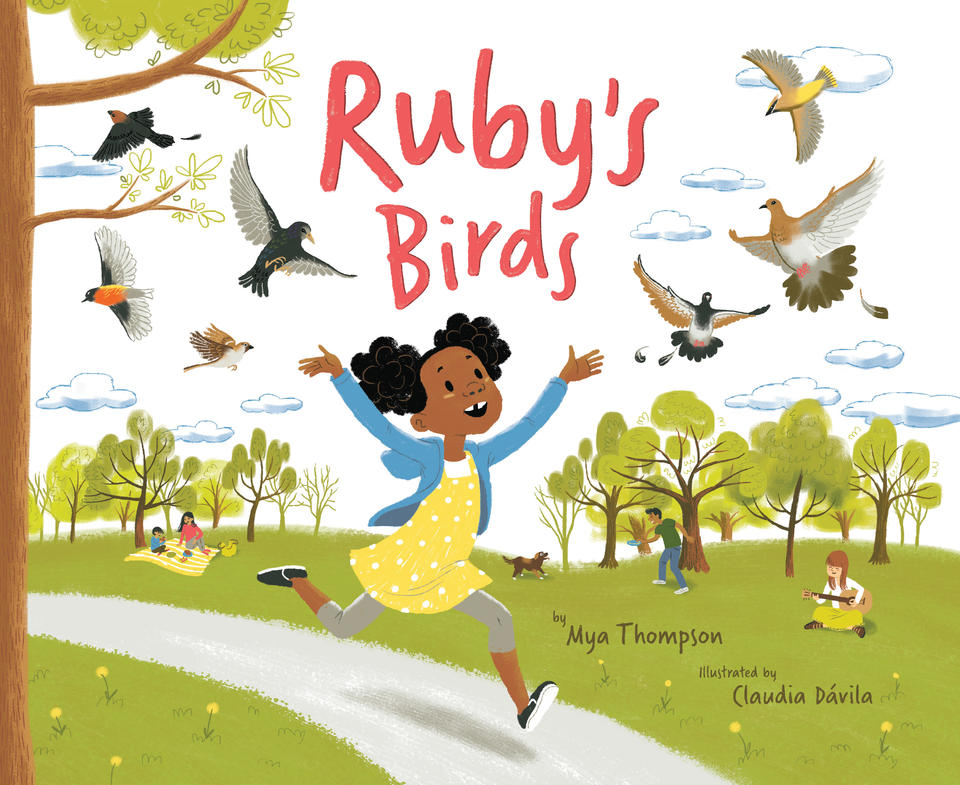
Having recently read and loved Ariel Gordon’s celebration of urban forests, not to mention still coming off a recent trip to New York City, Ruby’s Birds, by Mya Thompson and Canadian illustrator Claudia Dávila (we’re big fans of hers) is high up on our list at the moment. It’s the story of Ruby, a young girl with too much energy—so much so that she’s driving her family batty as they’re cooped up in their apartment. And so when a neighbour offers to take Ruby on an adventure to Central Park, she’s totally game, and brings her usual merrymaking self—which is a bit of a problem. Because they’ve gone birding, for which a person must necessarily be quiet, and be patient. Which does not come easy to Ruby at all, but then her patience is rewarded at the sight of a golden-winged warbler.
“We move carefully. We’re serious. We pay attention. We watch for tiny movements in the leaves. We try and try.”
Ruby’s Birds is published by Cornell Lab of Ornithology, whose mission is advancing the understanding and protection of the natural world. The story is fun, the illustrations interesting and dynamic, and the book concludes with information about city birds, the Cornell Lab’s Celebrate Urban Birds project, a list of 14 different species that can be located in the pages of the book and even in the reader’s own city, plus a list of inspiring tips for nature walks. It’s a great book to inspire readers to get outside and get exploring, and perfect for spring.
